Click on photo to enlarge. Scale line in photo equals 1cm unless otherwise specified.
* Species which are commonly encountered on the beach.
Limidae
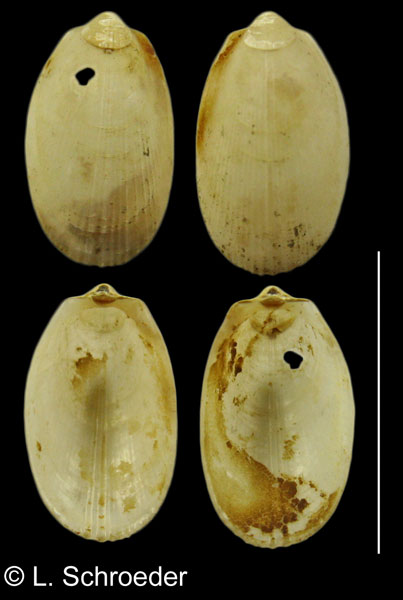 Departure Bay, BCLimatula attenuata Dall, 1916Attenuate Fileclamsubtidal, 15-274m or more size to 8mmnorth Washington to north AlaskaThis species is narrow with small ears.(synonym - Limatula subauriculata)
Departure Bay, BCLimatula attenuata Dall, 1916Attenuate Fileclamsubtidal, 15-274m or more size to 8mmnorth Washington to north AlaskaThis species is narrow with small ears.(synonym - Limatula subauriculata)
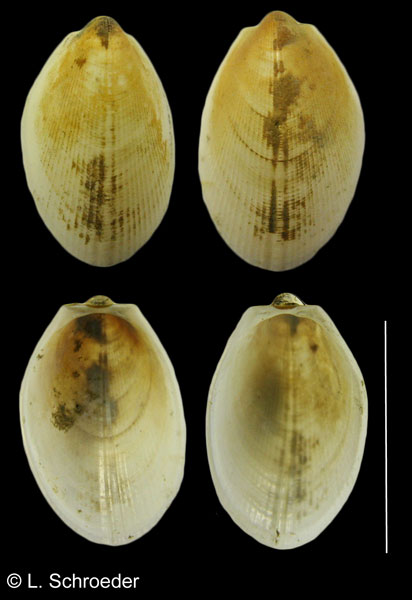 off Cape Scott, BC
off Cape Scott, BC
Limatula saturna F.R. Bernard, 1978
Saturna Fileclam
subtidal, 30-675m or more size to 16mm
north Mexico to south Alaska
This species is a little broader with larger ears than L. attenuata. Data on some museum specimens list depths of around 2000m
(synonym - Limatula californica)
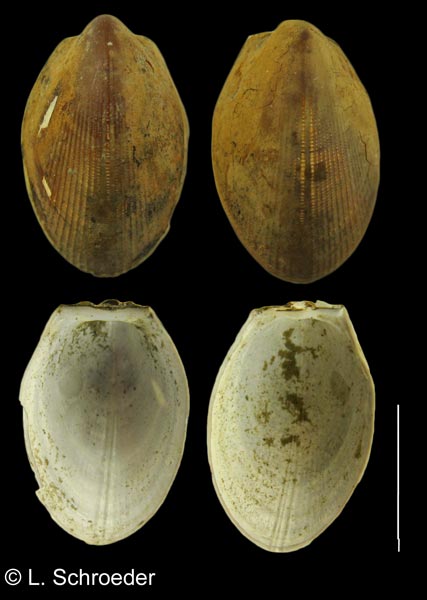 off Cape Scott, BC
off Cape Scott, BC
Limatula vancouverensis
F.R. Bernard, 1978
Vancouver Fileclam
subtidal, 2000-4100m or more size to 16mm
south California to central BC
This species is broad and more inflated than the other two shown.
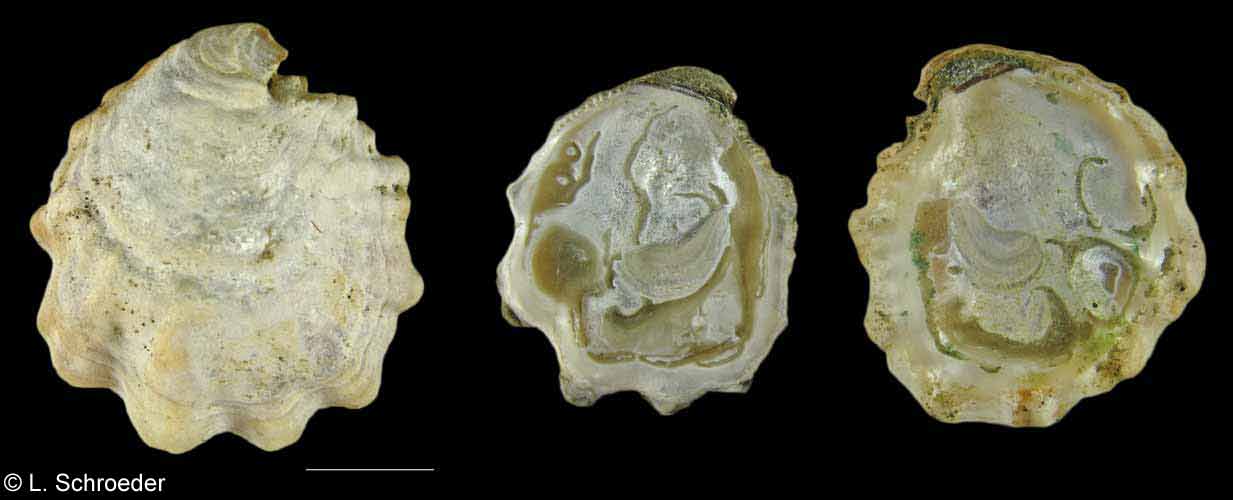
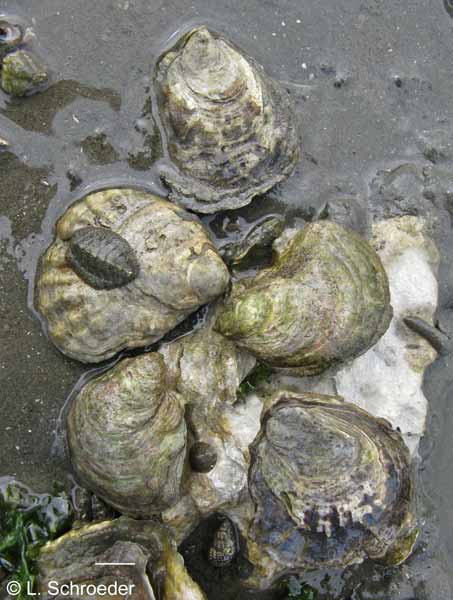
Boundary Bay, BC
Totten Inlet, WA, intertidal
Ostrea lurida Carpenter, 1864Olympia Oysterintertidal to 50m Panama to southern Alaska size to 90mm
This
is our only native species of oyster and it can be hard to find.
It prefers protected waters. The shell shape is variable,
depending on its environment. The area of attachment may be small
to broad and the margin may be smooth to slightly fluted.
The color may be white, gray or purple with darker rays.
The interior is white to greenish. This species has returned to being known as O. lurida. O. conchaphila has been determined to be strictly a tropical species.
(previous name - Ostrea conchaphila)
Bivalves
Family Limidae, Ostreidae & Anomiidae
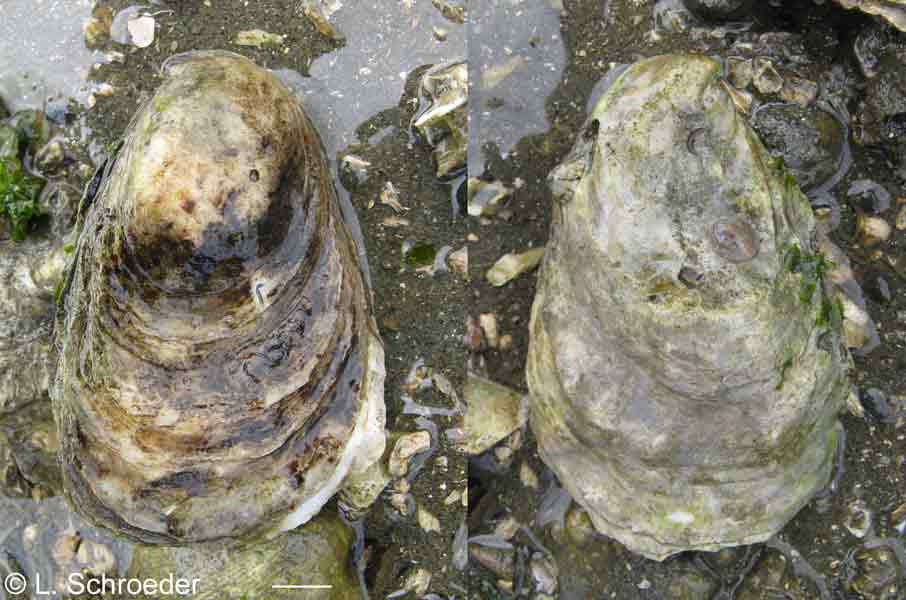 Totten Inlet, WA, intertidalCrassostrea virginica (Gmelin, 1791)Eastern Oysterintertidal size to 20 cmIntroduced from the western Atlantic. It is in commercial production in PugetSound and California. A small wildpopulation exists in Boundary Bay, BC.(previous name - Ostrea virginica)
Totten Inlet, WA, intertidalCrassostrea virginica (Gmelin, 1791)Eastern Oysterintertidal size to 20 cmIntroduced from the western Atlantic. It is in commercial production in PugetSound and California. A small wildpopulation exists in Boundary Bay, BC.(previous name - Ostrea virginica)
This page last revised: 7-27-2020
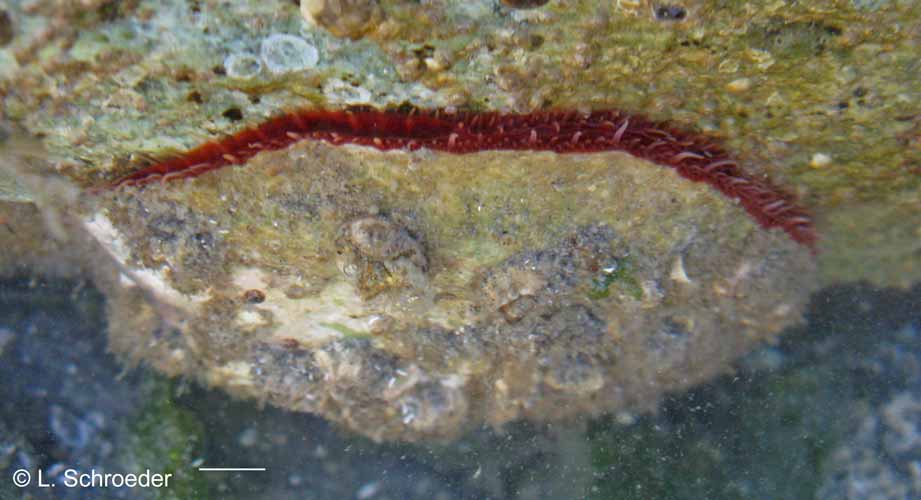
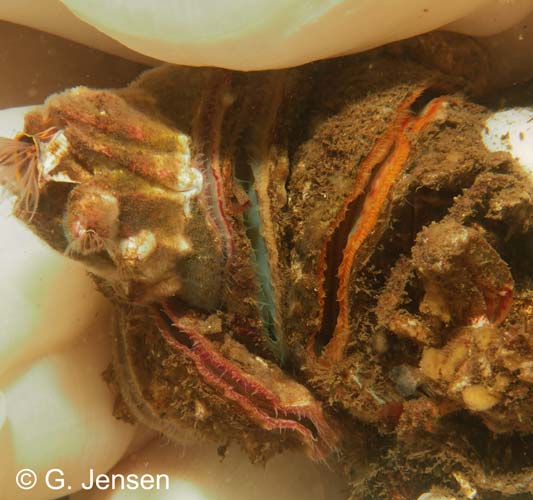
Birch Bay, WA, tidepool
Tacoma, WA, subtidal
Pododesmus macrochisma (Deshayes, 1839)
Green False-Jingle *
intertidal to 90m size to 128mm
northern Mexico to northern Alaska and west to northern Japan
It is common intertidally. It attaches permanently to rocks, pilings and even other jingle shells through a hole in its lower valve. The lower valve is flattened and reflects the shape of whatever it is attached to. The shell is light gray with a green interior and is often camouflaged by
algae and encrustations. The shell can be very thin or quite
thick. Radial ridges are visible on younger shells. The
mantle color is variable from white to yellow to red to green.
(synonyms - Anomia macrochisma, Placunamonia cepio)
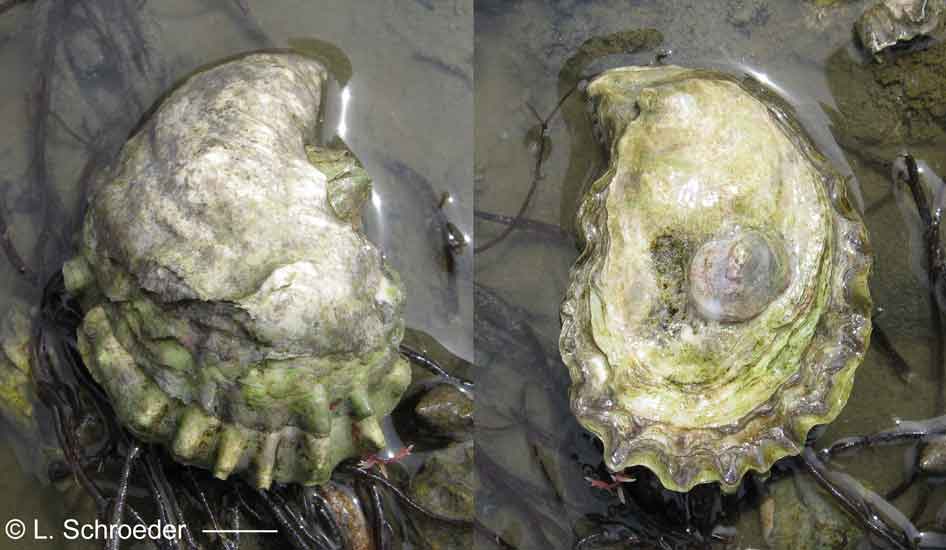 Totten Inlet, WA, intertidalMagallana sikamea (Amemiya, 1928)
Totten Inlet, WA, intertidalMagallana sikamea (Amemiya, 1928)
Kumamoto Oyster
intertidal - in commercial production size to 60mm
introduced from Japan, commercially raised from
Puget Sound to California
This is somewhat similar to the Pacific Oyster. The
left valve is deeply cupped and the right valve is
flattened. The margin is generally deeply fluted.
(synonym - Crassostrea sikamea, Ostrea gigas sikamea)
Ostreidae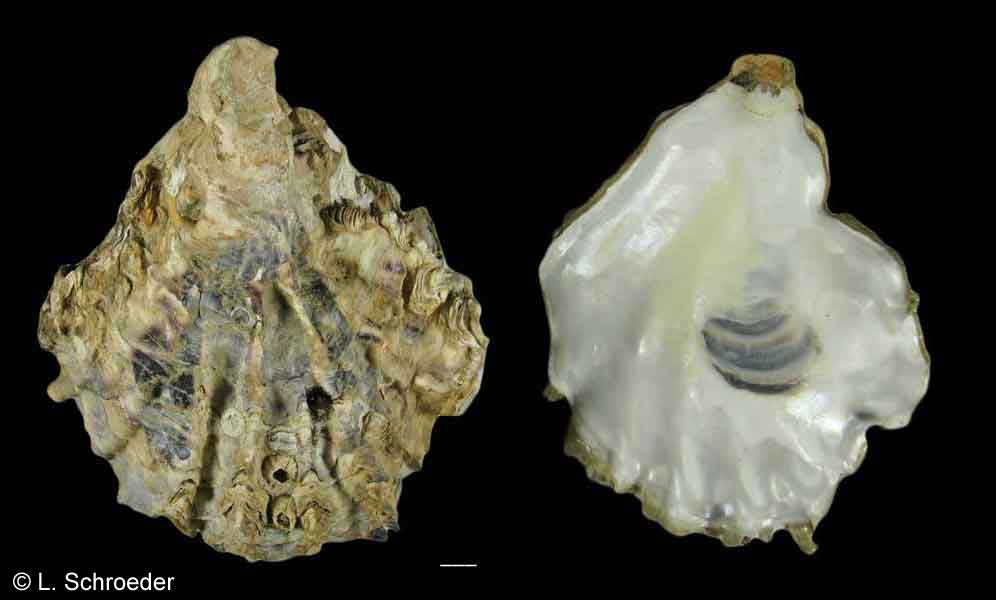
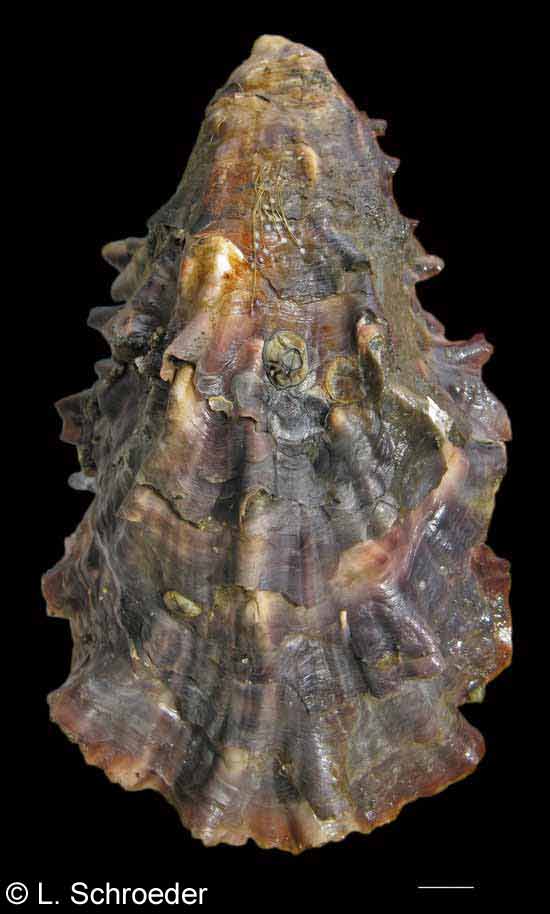
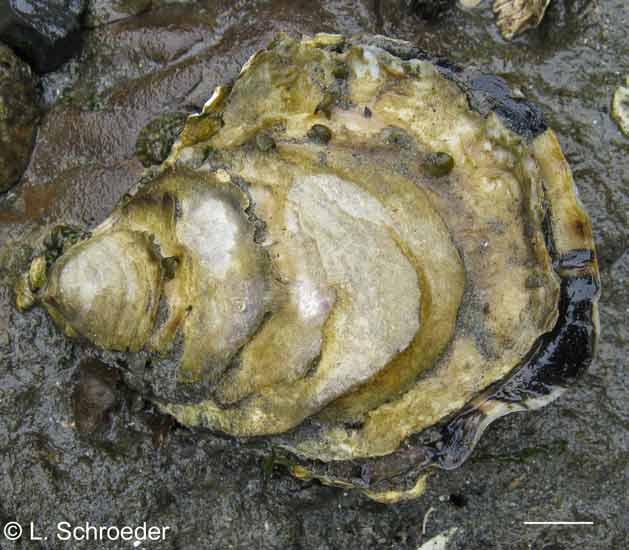
Semiahmoo Spit, WA
Dana
Passage, WA Pillar
Point, WA, intertidal
Magallana gigas (Thunberg, 1793)Pacific Oyster *intertidal to 20m size to 450mmintroduced from Japan to the U.S. and other parts of the world, naturalized from southern California to southern Alaska and is also in commercial productionIt is common intertidally. The new growth is often purple and the growth margin
is fluted. The shell shape is variable, depending on its environment, and the area of
attachment is small. The exterior is often eroded and it has a white interior. The
muscle scar is usually light-colored, but may have a purple or brownish tinge.
(synonyms - Crassostrea gigas, Ostrea gigas)







